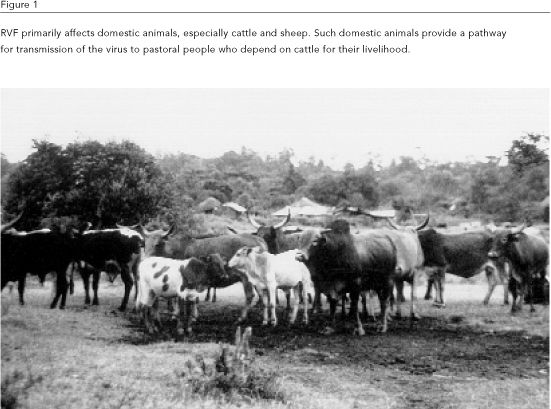All known Rift Valley fever(RVF) outbreaks in Kenya from 1950 to 1998 followed periods of abnormally high rainfall. On an interannual scale, periods of above normal rainfall in East Africa are associated with the warm phase of the El Niño/Southern Oscillation (ENSO) phenomenon. Anomalous rainfall floods mosquito-breeding habitats called dambos, which contain transovarially infected mosquito eggs. The eggs hatch Aedes mosquitoes that transmit the RVF virus preferentially to livestock and to humans as well. Analysis of historical data on RVF outbreaks and indicators of ENSO (including Pacific and Indian Ocean sea surface temperatures and the Southern Oscillation Index) indicates that more than three quarters of the RVF outbreaks have occurred during warm ENSO event periods. Mapping of ecological conditions using satellite normalized difference vegetation index (NDVI) data show that areas where outbreaks have occurred during the satellite recording period (1981-1998) show anomalous positive departures in vegetation greenness, an indicator of above-normal precipitation. This is particularly observed in arid areas of East Africa, which are predominantly impacted by this disease. These results indicate a close association between interannual climate variability and RVF outbreaks in Kenya.
Rift Valley Fever; Disease Outbreaks; Aedes; Insect Vectors; Ecosystem





